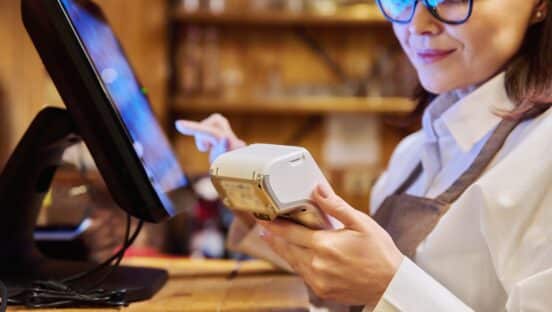When the world shut down due to the pandemic, restaurants found out just how important it was to get to know their own customers. Where once those customers were coming to them, they now had to bring their brand to those customers.
“Before, you had customers who came to your restaurant because they knew your brand, or it worked well with their work schedule,” says Orietta Verdugo, hospitality and restaurants GM at Intel. “Now it’s about that competition of figuring out, ‘Who will come to my site? How do I get them here?’”
One of the ways brands are turning profit during the pandemic is by leveraging artificial intelligence (AI) and the associated analytics to create a restaurant that better serves its customers. For example, let’s say there are no cars in a drive thru, but cars are passing by. Digital signage in the drive thru—usually reserved to function as a menuboard—can turn into a video display showing enticing footage of a drink being poured. That’s where the AI comes in—if it’s a warmer day, the board can detect the weather, and it will show a drink that is refreshing. On the other hand, if it’s a cold or rainy day, the board will know to show a video with something a bit more decadent and comforting.
“Similarly, AI can detect if a family is in a large car, like a Suburban, approaching the drive thru,” Verdugo says. “And they might know, okay, let’s highlight the family menu—maybe these customers didn’t even know we had a kid’s menu until today.”
Another way AI personalizes the drive-thru experience is by detecting if the lanes are jam-packed. In that case, the menuboard would help showcase a small amount of items, making the ordering process less daunting for a customer with a line of cars behind them. On the flip side, if there is only a car or two in line, the menuboard will pull out all of the stops to ensure the vehicle takes its time and maybe even explores new items, leading to increased ticket sizes.
Outside of the drive thru, Intel is also capable of installing kiosks that make it simpler for customers to order on foot. This has an added benefit—Verdugo says that research has shown customers feel more comfortable requesting to super-size meals, or add desserts, if they’re saying it via a kiosk or their phone rather than to an employee.
Some of this might sound intimidating to operators—a complex ecosystem of artificial intelligence is a newer idea to most in the restaurant industry. Managers aren’t typically technologists, and they might think these solutions would be too complicated to implement. The idea here, says Verdugo, is that teaming up with Intel and their ecosystem of partners unlocks unlimited potential for brands, while they have to do very little but express what they are looking for out of technology, and Intel along with their partners takes it from there.
“What we do at Intel is build capabilities that enable custom, ready-made, scalable solutions to help bring quick-service brands up to speed,” Verdugo says. “We help them get to know their customers, grow ticket sizes, and maximize efficiencies. This has been a really tough year on the restaurant industry, but it’s time to find technology that helps them achieve their goals and bring them back into a profitable world where they are building brand loyalty with these artificial intelligence solutions.”
To find out more about how Intel can help your brand leverage AI to get to know your customers, visit Intel’s website.













